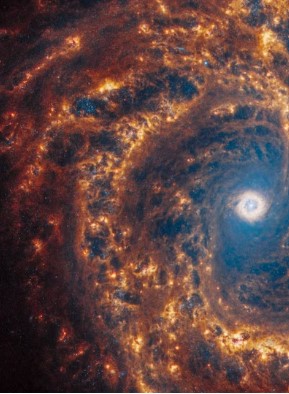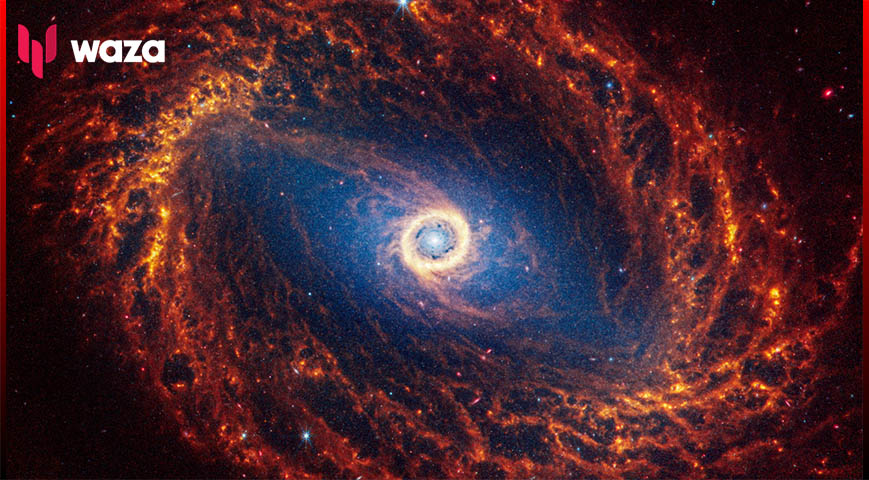The James Webb Space Telescope has recently released a series of images that reveal 19 spiral galaxies that are relatively close to our Milky Way in remarkable detail. These images may provide new insights into the structure and evolution of galaxies and star formation.
On Monday, a group of scientists working on the Physics at High Angular Resolution in Nearby GalaxieS (PHANGS) project, which spans multiple significant astronomical observatories, released the images.
Out of the 19 galaxies, NGC5068 is the closest, approximately 15 million light-years away from Earth, while NGC1365 is the furthest away, roughly 60 million light-years away. Light travels 5.9 trillion miles (9.5 trillion km) in a year, known as a "light year."
.jpeg)
Launched in 2021, the James Webb Space Telescope (JWST) started data collection in 2022 and is changing our understanding of the early universe while capturing unique images. The orbiting observatory primarily uses infrared light to observe the universe. Launched in 1990 and still in use, the Hubble Space Telescope has studied chiefly it at optical and ultraviolet wavelengths.
Did you read this?
Spiral galaxies are a common type of galaxy shaped like giant pinwheels. One is our Milky Way.
The new observations were made using Webb's Mid-Infrared Instrument (MIRI) and Near-Infrared Camera (NIRCam). They display millions, if not billions, of individual stars and about 100,000 star clusters.
"These data are important as they give us a new view on the earliest phase of star formation," said University of Oxford astronomer Thomas Williams, who led the team's data processing on the images.

"Stars are born deep within dusty clouds that completely block out the light at visible wavelengths - what the Hubble Space Telescope is sensitive to - but these clouds light up at the JWST wavelengths. We don't know a lot about this phase, not even really how long it lasts, and so these data will be vital for understanding how stars in galaxies start their lives," Williams added.
The spiral arms of about half of the spiral galaxies are connected to a straight structure called a bar that extends from the galactic center.
"The commonly held thought is that galaxies form from the inside-out, and so get bigger and bigger over their lifetimes. The spiral arms act to sweep up the gas that will form into stars, and the bars act to funnel that same gas in towards the central black hole of the galaxy," Williams said.
For the first time, the images have allowed scientists to resolve the structure of the clouds of gas and dust that form stars and planets in galaxies beyond the large and small Magellanic clouds in great detail. These two galaxies are considered galactic satellites of the vast Milky Way.









